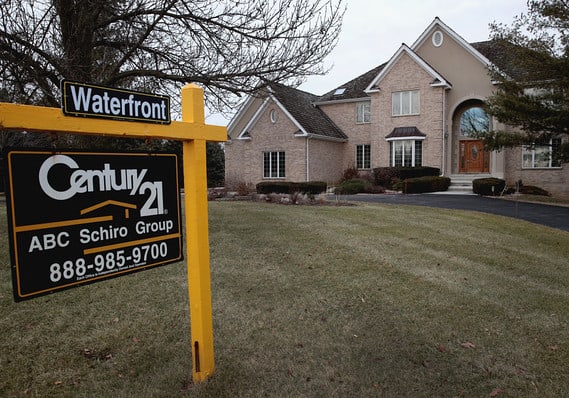Properties are flying off the market, yet sales are stagnating
The numbers: Existing-home sales ran at a seasonally adjusted annual 5.19 million rate in April, the National Association of Realtors said Tuesday. That was 0.4% lower than March and 4.4% lower than a year ago.
What happened: Sales of previously-owned homes have been choppy recently; following a big surge in February, they retreated in March. For April, the MarketWatch consensus was for a 5.35 million selling pace, not a decline.
The median selling price in April was $267,300, a 3.6% annual increase. At the current pace of sales, it would take 4.2 months to exhaust available supply, well below the 6-month threshold that’s traditionally been considered a marker of a balanced market. Properties stayed on the market for an average of 24 days in April.
Sales were down 4.5% in the Northeast and 0.4% in the South. They were flat in the Midwest and up 1.8% in the West.
First-time buyers made up 32% of transactions in April, while individual investors accounted for 16% of buyers during the month. But more recent comprehensive research – NAR’s is based on survey data – suggests first-time buyers currently make up about the same share of the market that they have for the past two decades – nearly half.
Big picture: The Realtor lobby group remains upbeat, noting in a release that their chief economist, Lawrence Yun, “expects moderate growth very soon.” Yun last week released an updated 2019 forecast: he expects existing-home sales to stagnate this year at 5.34 million homes sold, the same as 2018 and down 3% from 2017.
What they’re saying: “Existing-home sales slipped relative to last month and last year,” said Mike Fratantoni, chief economist for the Mortgage Bankers Association. “However, the unadjusted data shows some strength, particularly in the South and Northeast, suggesting that seasonal patterns may be a bit different this year. We view it as a positive that inventories continue to increase, although the supply of homes on the market remains relatively tight, and the pace of home-price increases continues to decelerate.”
Market reaction: The Hoya Capital Housing ETF HOMZ, +1.06% , a new offering designed to make money from the housing shortage by tracking a broad basket of real estate-related stocks, has gained about 3.7% since launching in late March.

